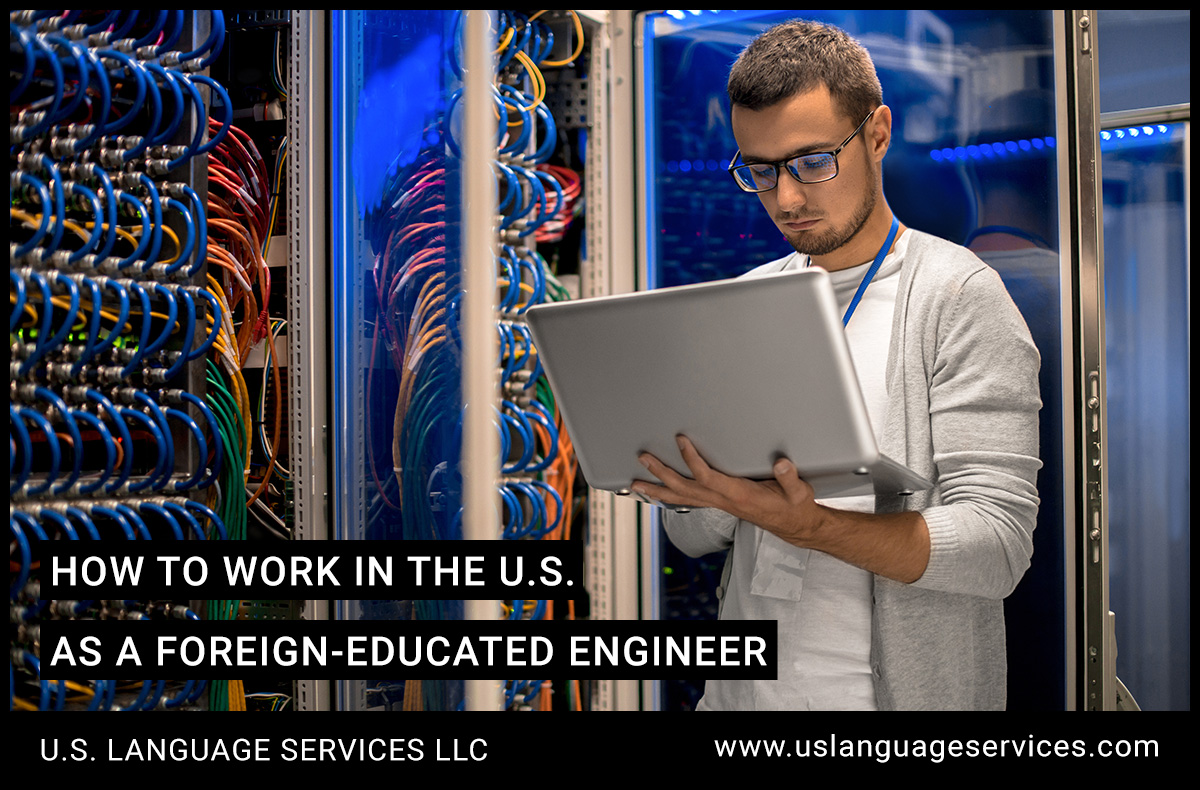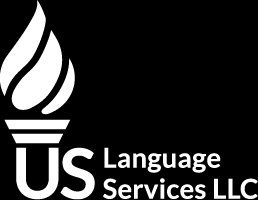How to Work in the U.S. As a Foreign-Educated Engineer

Engineering is a commonly sought-after career due to its stability and almost-constant availability in the United States. In addition to these advantages, U.S. engineers make good money. According to the U.S. Bureau of Labor Statistics, engineers make between $46,910 and $130,850 on average, with median salaries depending on the specific discipline of engineering. If you are a foreign-educated engineer, you may be wondering what the best way to move your profession to the United States is. Our guide helps you understand this process and answers important questions such as:
- What Is the Process for Working in the U.S. As a Foreign-Educated Engineer?
- How Much Does It Cost to Work as a Foreign-Educated Engineer in the U.S.?
- How Long Does It Take To Work as a Foreign-Educated Engineer in the U.S.?
- Are There Any Restrictions to Working as a Foreign-Educated Engineer in the U.S.?
- What Are the State-Specific Requirements for Foreign-Educated Engineers?
- What Are the Immigration Requirements for Foreign-Educated Engineers?
- Where Can I Get a Certified Translation?
What Is the Process for Working in the U.S. As a Foreign-Educated Engineer?
There are many engineering disciplines in the U.S. that you might want to work in; it’s important to review the type of engineering job you wish to obtain in the U.S. and evaluate what your foreign education might qualify you for before starting the process of working in the U.S. as an engineer. Most engineering professions have similar routes to licensing, and the steps you need to complete the work in the U.S. as a foreign-educated engineer include:
- Obtaining an education at either a bachelor’s or master’s degree level in your specific engineering field is the first step. You will need to have an education from a program accredited by the Accreditation Board for Engineering and Technology’s (ABET) Engineering Accreditation Commission (EAC). Individuals with foreign credentials may obtain a credential evaluation of their degrees and any applicable work experience by using the National Council of Examiners for Engineering and Surveying (NCEES) credential evaluation service. This service determines if you have the right education to be eligible to sit for the engineering examination required before you are eligible for state licensing. Make sure you have a certified translation of your original academic documents to submit to your credential evaluation service.
Along with meeting the education requirements for engineering, you will also need at least four years of work experience in your engineering discipline. Some states may require additional experience or education elements, so make sure you check your specific state’s licensing board for more detailed information.
- After you’ve ensured that you’ve met all education and experience requirements, you will need to prepare for the examinations required of engineers. Both the Fundamentals of Engineering (FE) exam and the Principles and Practice of Engineering (PE) exam are required before you are eligible to apply for state licensure. It may also help you to prepare for working in the U.S. to pass either the Test of English as a Foreign Language (TOEFL) or the International English Language Testing System (IELTS) if you aren’t from an English-speaking country.
The NCEES does offer more details on taking the FE and the PE outside of the United States via their international engineering information page.
- Once you’ve met the education and experience requirements of your engineering discipline and passed the FE and the PE, you will need to look into state licensing. Choose a state you wish to work in and consult with that state’s engineering licensing board to see if further state-specific examinations and education are required. You will most likely need to submit an application along with your test scores, credential evaluation report, original documents, and certified translations in addition to licensing fees before you receive a state engineering license.
While you are in the process of obtaining state engineer licensing, start looking into visas that will allow you to immigrate to the U.S. and work as an engineer. There are several types of visas to choose from and this process does take significant time to complete in most cases, so the earlier you start referencing this information and submitting your application, the quicker you can become a foreign-educated engineer in the U.S.
How Much Does It Cost to Work as a Foreign-Educated Engineer in the U.S.?
It can cost several thousands of dollars to work in the U.S. as a foreign-educated engineer, but this may easily be seen as an investment into your future career. Many engineers do receive high salaries that help make up for this cost over time. The cost of this process includes the cost of a credential evaluation and certified translations, completing education and supervised work requirements when necessary, completing the TOEFL or IELTS if necessary, registration and preparation for both the FE and PE exams, and state licensing. You should also add in the cost of obtaining student visas when needed or professional work visas as you plan to settle in the United States; visa applications and legal fees run from a few hundred to several thousand dollars. Some states may also require that you complete continuing education or examination requirements and pay license renewal fees on a regular basis.
How Long Does It Take To Work as a Foreign-Educated Engineer in the U.S.?
The process for working as a foreign-educated engineer in the U.S. isn’t a short one due to the many education, experience, and licensing requirements that you will need to obtain or verify. You will also need to include examination preparation times and the time it takes to obtain a work visa. On average, it may take between 2 and 4 years to practice in the U.S. as a professional engineer. If you need to complete an entire engineering program in the U.S. or complete a significant amount of educational and experience work, this process can be longer. It’s important to note that studying for the FE and PE requires at least 3 months each of study time, and that state licensing also adds several months to your timeline. Obtaining a U.S. visa is also a long part of this process and may take between 13 and 24 months to receive once your application is submitted.
Are There Any Restrictions to Working as a Foreign-Educated Engineer in the U.S.?
After you’ve completed all education requirements, finished your internship or supervised working requirements, passed required exams, and obtained an engineer license for your engineering discipline in your chosen state, you will be able to practice as an engineer without issue. Make sure that you keep up with any specific state requirements when it comes to continuing education and license renewal fees, in addition to obtaining the correct visa for working in your chosen state without interruption.
What Are the State-Specific Requirements for Foreign-Educated Engineers?
State requirements for foreign-educated engineers do vary based on the specific state that you have chosen to work in and how your selected engineering discipline is regulated in that specific state. You may be required to complete additional exams, submit a license application and fees, complete additional state-supervised work experience, and keep up with continuing education and license renewal steps once a state engineering license has been awarded. You can look into the details of what your chosen state might require for you to obtain an engineering license by visiting your state’s engineer licensing board directly or by using the directory that the NCEES provides. Because education and work experience requirements also vary based on the state you wish to work in, it’s important that you review state-specific requirements before committing to an educational program and developing your plan to immigrate to the U.S. as an engineer.
What Are the Immigration Requirements for Foreign-Educated Engineers?
All foreign individuals that wish to work as engineers in the United States will first need to obtain a visa or green card that legally grants them the right to work in their chosen state. Because engineering requires advanced degrees and knowledge, there are a few different types of visas that you may be eligible for. The O-1A Visa for Individuals with Extraordinary Ability or Achievement is a common choice for engineers, as is the H-1B Visa for Specialty Occupations or the employment-based EB-2 and EB-3 visas. Depending on the visa type that you apply for, you may be able to turn your work visa into a green card by following the proper processes and application steps. Make sure to consult with a U.S. immigration lawyer to determine the best immigration solution for your situation and to ensure you have the best chance of getting your visa or green card application approved by United States Citizenship and Immigration Services.
Where Can I Get a Certified Translation?
Obtaining a certified translation of your original documents such as academic transcripts and professional licensing is an essential part of becoming a foreign-educated engineer in the United States. Reliable and accurate certified translations are vital as you obtain credential evaluation services, submit licensing applications, and apply for visas. You can visit our online store to obtain certified translations of essential documents such as:
- Diplomas
- Academic transcripts
- Business licenses and certifications
- Resumes and employment records
- Birth certificates
Guaranteed Acceptance
All our certified to English translations are accepted by the USCIS. Our translations follow the guidelines established by the USCIS and are also accepted by educational institutions.
Most Requested Documents
FAQs
You can order most translations 24 hours a day, 7 days a week through our online store. For large projects (more than 20,000 words or 50 pages), please request a quote.



